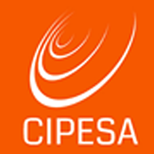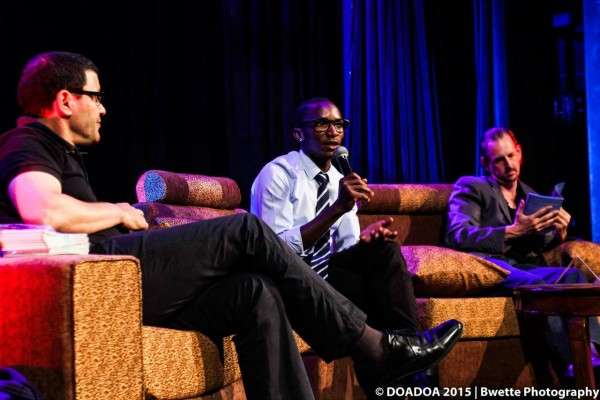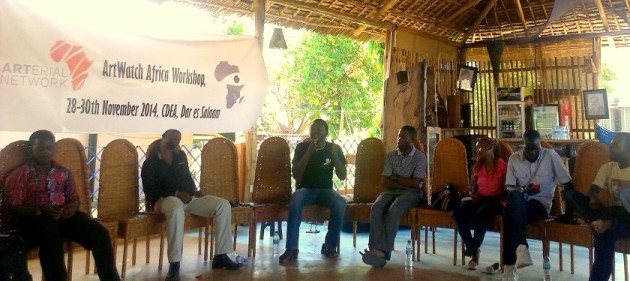By Juliet Nanfuka |
The creative industry provides a blend of literature, visual, audio, physical and verbal means through which to communicate complex social issues – increasingly complemented by online tools. In particular, the music industry in Africa is driving the digitalisation of content as it aligns itself with global trends.
There are locally developed apps to cater specifically to African content producers and consumers. Websites such as Fezah (Uganda),Mvelani (Malawi), Mkito (Tanzania) – which also offers a short message service option to source music through feature phones – and Spinlet (Finland, Nigeria, South Africa) are providing unique African music platforms through which content can be easily disseminated. These platforms are creating avenues through which African artists can promote, distribute and monetise their content while also reaching a global audience.
However, the economic potential that the music industry has – and by extension, other creative industries – is often overlooked. According to PriceWaterHouse Coopers, Kenya’s music market generated revenues of US$19.8 million in 2012, up from US$16.5 million in 2008, a figure projected to reach US$20.7 million in 2015. The report also indicated that spending on digital music will overtake physical spending in 2015.
In Nigeria, the music market generated revenues of US$51.3 million in 2012 with forecasts indicating further growth to reach US$53.8 million in 2017. The report further estimates spend on digital music content in Nigeria will rise to an estimated 66.6% of digital’s share of total spending on recorded music by 2017, up from 49.0% in 2012.
But a 2015 British Council report on the music sector in East Africa found that “the impact of digitisation on both music-making and distribution is not fully understood nor is it encompassed by statutory law, with most regulations having been passed before the digital revolution.” This impact purportedly spans beyond music, influencing other areas of the creative industry such as photography, visual arts including painting, graphic and digital design, sculpturepaint, dance and even literature.
Accordingly, last May, East African artists and performers convened in Jinja, Uganda for Doadoa, dubbed an “East African Performing Arts Market”, for a three-day event aimed at providing a platform for East African artists to engage with each other as well as to define the path that the creative industry takes in making itself more financially sustainable. Doadoa echoes the Festival au Désert in Mali and South Africa’s Moshito festivals which also connect artists from across the continent.
Discussions at DoaDoa explored issues of content creation, music production and commercialisation in a sector that is challenged by limited infrastructure, skills, geographic divides, piracy, and fractured protection of intellectual property. As more East Africans have gone online, so has the amount of content generated for both general and commercial consumption yet it accounts for just a small fraction of the global content available online.
Despite the increased amount of online content produced, there remain few laws applicable to the creative industry and for those in existence, there is limited enforcement. An ArtWatch Africa 2013 report on Monitoring Freedom of Creative Expression noted the limited priority and commitment that African national constitutions have for guaranteeing freedom of creative expression or cultural rights. As such, there have been reports of abuse and infringements on artists’ rights when their work challenged political, religious and social norms.
For instance, in September 2014, South African artist Brett Baily struck a nerve when his piece, Exhibit B, on exhibition in London challenged racism. Fellow South African activist and photographer Zanele Muholi has also received criticism for her work depicting the brutality that black lesbians face in the hands of their communities. In 2012, a Ugandan play titled “State of the Nation” was cancelled by the Media Council because of its subject matter of corruption and poor governance, while in 2013, Daniel Cecil, a British theatre producer, was deported from Uganda following work on a play that had a gay character.
However, despite the emergence of bills applicable to the creative industry such as Kenya’s National Design Bill 2015 or the East African Community Creative and Cultural Industries Bill, 2014, there remains little explicit mention in the bill of online media as a tool increasingly used in the creation and dissemination of artistic and cultural content. Similarly, there are no legal mechanisms to protect and promote a regional online creative economy. Kenya however has released their National Design Bill which established the Institute of Designers Kenya. It however limits creative expression to members of the (IDK) thus posing a challenge to creatives without the means to pay the registration fees for membership with the institute. It also makes limited mention of online design content.
As creative content has become pivotal in the digital economy, the need to protect it as a form of expression is key to its sustainability both online and offline. Creating symbiotic relationships between the artistic community across the continent, online advocacy groups and human rights defenders in pursuit of more locally driven and cohesive advocacy on social issues such as freedom of expression, privacy, data protection and surveillance is key.
Image: Bwette Photography
Promoting Cultural and Artistic Expression in Africa
By Ashnah Kalemera
As humans, individual artists enjoy rights enshrined in national laws and international instruments on freedom of expression, assembly and association. However, there are variations between countries on what the laws provide for and the level of freedoms of creative, artistic and cultural expression that citizens enjoy.
In Africa, various factors impact upon these freedoms – including political, religious, social-economic and cultural issues. According to the ArtWatch Africa 2013 report on Monitoring Freedom of Creative Expression, national constitutions, laws, regional and international conventions of which African countries are signatories support cultural rights. However, while some national constitutions expressly protect arts and creativity, others only “implicitly” refer to the sector through guaranteeing the rights to freedom of expression or cultural life.
The report indicates that only a few African countries have ratified international conventions on cultural and artistic expression, and even less have national cultural policies. The situation is further compounded by little or no state and civil society mechanisms to monitor adherence to countries’ commitments to upholding cultural and artistic rights.
Table 1: Status of the Legal Framework of Cultural and Artists Rights in Select East African Countries
| Country | Status of International, National and Regional Instruments related to Cultural and Artists Rights | |||||
| National Cultural Policy | University Declaration of Human Rights | UNESCO Convention on the Protection and Promotion of the Diversity of Cultural Expression | International Covenant on Civil and Political Rights | International Covenant on Economic, Social, Cultural and Political Rights | The African Charter on Human and People’s Rights | |
| Burundi | None | Recognises the Declaration as state party to the United Nations | Ratified 2008 | Ratified 1990 | Ratified 1990 | Ratified 1989 |
| Ethiopia | Cultural Policy 1997 | Ratified 2008 | Ratified 1993 | Ratified 1993 | Ratified 1998 | |
| Kenya | Culture and Heritage Policy 2009 | Ratified 2007 | Ratified 1972 | Ratified 1972 | Ratified 1992 | |
| Rwanda | Draft Cultural Policy in 2010 | Ratified 2012 | Ratified 1975 | Ratified 1975 | Ratified 1981 | |
| Uganda | Culture Policy 2006 | Not party | Ratified 1995 | Ratified 1987 | Ratified 1986 | |
Accordingly, ArtWatch Africa is working to advance freedom of creative and cultural expression in Africa. In November 2014, ArtWatch Africa in collaboration with Culture and Development East Africa (CDEA), organised a workshop to deepen key Tanzanian stakeholders’ understanding of cultural and artistic rights and to explore approaches in addressing the challenges faced in the national cultural sector. The three-day event was part of a series of workshops organised by ArtWatch Africa’s project that monitors the challenges and constraints on freedom of creative expression in Africa towards developing democracy and human rights on the continent.
Participants at the Tanzania workshop identified a number of challenges faced by local artists, including limited networks and alliances that advocate for artists’ rights. The few existing artists associations had prohibitive member subscription fees. Meanwhile, low media coverage and interest in arts and culture affected information availability in the public domain and advocacy campaigns.
Information and Communication Technologies (ICT) offer a potential to promote cultural and artistic expression but can also act as platforms for negating these rights. For instance, tools such as social media can be utilised to advance freedom of expression, build networks of like-minded organisations and enable individuals to share, seek and impart relevant information. On the other hand, the tools can be used to control arts and culture through classification restrictions on publishing and dissemination of content on grounds of age, blasphemy and censorship, among others.
During 2015, the OpenNet Africa project will be seeking to work with visual and performing artists to understand and promote freedom of expression, notably on the internet through their work and networks in Africa – both as targets for education campaigns and as agents of activism. This is in line with the project’s objectives of promoting access to information, privacy, safety and security online. OpenNet Africa is an initiative of the Collaboration on International ICT Policy for East and Southern Africa (CIPESA) in partnership with the Humanist Institute for Cooperation with Developing Countries (Hivos) and the Open Technology Fund.


